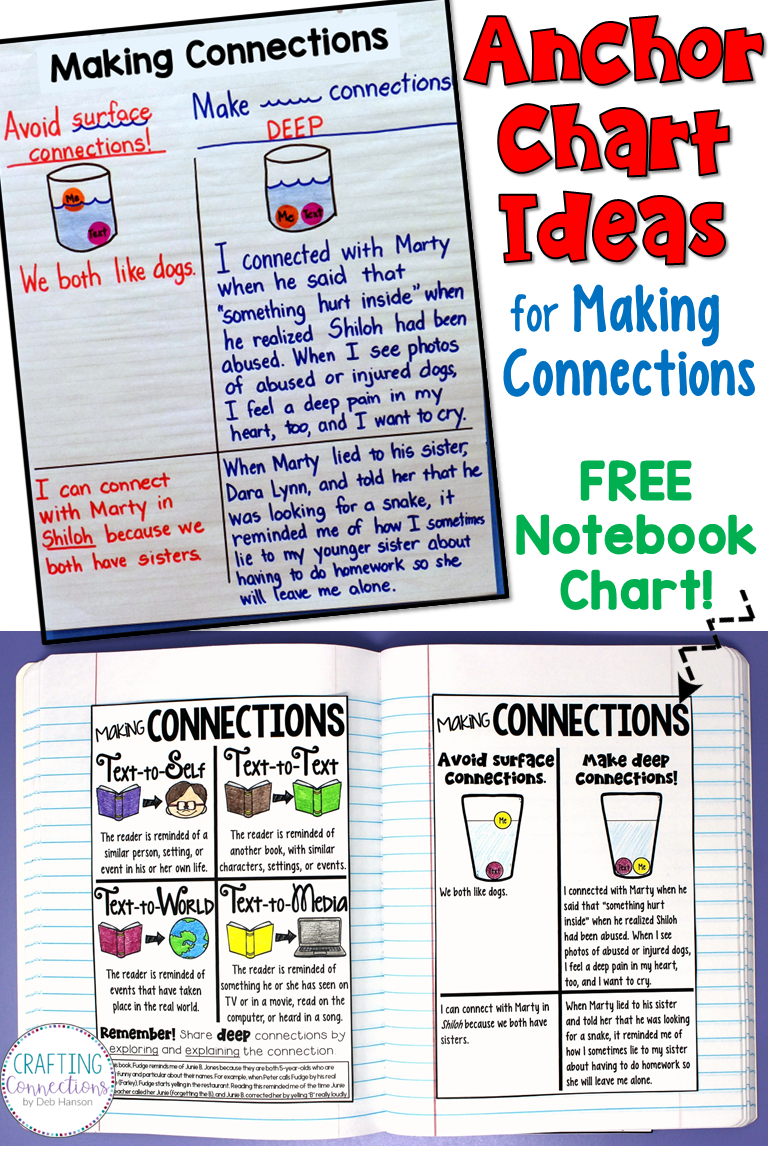Here is a scene that replayed itself more often than I would like to admit when I was teaching reading. Has it ever happened to you? When our reading group time was drawing to a close, I would announce the pages I expected my students to read on their own, hand each student a sticky note, and tell them their assignment was to read the assigned pages and record a connection they made while reading the pages. From previous lessons, students already knew that they could choose between making a text-to-self connection, a text-to-text connection, or a text-to-world connection. I had modeled writing strong connections several times, and I felt like students should know my expectations.
Much to my disappointment, however, more than half of my students would return to the next day's reading group with a very weak connection quickly scribbled on their sticky note... something like "I can connect with Peter because we both have annoying little brothers", or "Shiloh reminds me of A Dog's Life because both books are about a dog". I would ask questions to pull a deeper connection out of each student, but it often felt like I was exerting a lot more effort than my students were putting forth.
Then, one day, I ran across a blog post by Krista from The Second Grade Superkids. She shared a lesson she did with her students where she explained the difference between deep connections and surface connections. (The lesson can be traced back to Tanny McGregor's book called Comprehension Connections.) The lesson requires a glass of water, a ping-pong ball, and a golf ball. She began the lesson by dropping the ping-pong ball into the glass of water. Obviously, it stayed afloat on the surface of the water. She compared this floating ball to the surface connections we make while reading. Surface connections do not help us understand the story any better- they just sit on the surface of the text. Then she dropped the golf ball into the water, and it immediately sank to the bottom of the glass. She compared the golf ball to the deep connections that we should make while reading. Deep connections help us understand the story and infer the author's message.
This lesson resonated with me. I wish I would have found this blog post while I was still teaching reading groups!! I loved the analogy in this lesson so much that I immediately pulled out my anchor chart and markers, and created a connections anchor chart that illustrated the point. I believe hanging the anchor chart will serve as a reminder for students long after the initial lesson presentation is over.
I decided to share this lesson idea and anchor chart with you today in case you want to replicate it for your students! At the beginning of the school year, we teachers spend a lot of time teaching students our expectations, and this falls right in line with teaching students our expectations when we ask them to make a connection to what they are reading. If you want to dive even further into this topic and show your students several examples of well-written deep connections, feel free to check out my Making Connections PowerPoint or bundle of resources.
Finally, I want to share two personal anchor charts I made related to this topic. (I call them personal anchor charts because students can glue them into their reading notebooks and refer to them whenever they wish.) As you can see, the first one provides definitions of the four types of connections. The second one is a replica of the anchor chart shown above.
The anchor chart on the left is part of my Personal Anchor Charts for 27 Reading Skills resource. Click on the link to check it out.
The anchor chart on the right is FREE! Click here to download it.












Amazing!!! Yes those simple connections drive me crazy!!!! Now to find a golf ball and a ping pong ball!
ReplyDeleteThis is a great idea and super chart! Totally pinning it!
ReplyDelete-Lisa
Mrs. Spangler in the Middle
I love this!! What a great visual! Thanks!
ReplyDeleteHi Deb! I ran across your charts and post and was astounded! This lesson with two golf balls--one a normal golf ball and the other a child's hollow golf ball--dropped into a clear cup of water sitting on top of a text, was an original idea of mine that I shared with a number of classes of teachers that I taught back in 2011 - 2013. The teacher of The Second Grade Superkids attended one of those courses. I never knew that she posted about this . . . and you too. It was and still is a very powerful lessons that allows my young students to see the difference between "surface" connections and "deep" connections that bring us closer to the text. I strongly support launching lessons that are more abstract in concrete ways! I wish you the best . . . more effective teaching as you strive to connect with the students that you guide toward deeper understandings of the books they read.
ReplyDeleteHi Janet!! Thank you so much for taking the time to write to me and let me know that you were the creative teacher who came up with this fabulous idea for teaching about the difference between deep connections and surface connections! I absolutely love it! I, too, love to take abstract concepts and try to make them concrete for my students as much as possible. Thank you again!
Delete